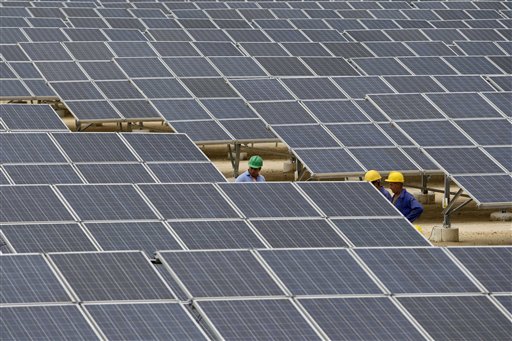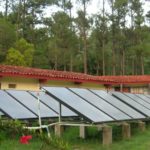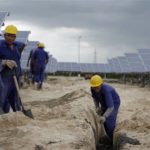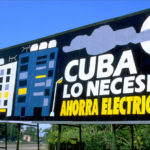
Is renewable energy a solution for Cuba?
HAVANA — Cubans, who know about energy crises and revolutions, understand how much oil and its international economic fluctuations affect their daily lives. That is why, when in mid-2016 adjustments and cutbacks of crude were applied to the state sector, tension and social uncertainty arose over a possible return of the power blackouts throughout the country.
To Cuba, a country 99.2 percent electrified, energy and food sovereignty is a core issue. Changing the energy matrix and moving ahead with the use of Renewable Sources of Energy (RSE) are a declared objective of the Cuban State.
The words of Raúl Castro at the latest meeting of the National Assembly of the People’s Power, confirm this:
“Without renouncing to an increase in the national production of petroleum, for which we also need investments, we must accelerate the development of Renewable Sources of Energy, which today account for only 4.65 percent of electricity generation. We have more than enough conditions for that in solar or photovoltaic energy, eolic and biomass energy.”
To do so, the “Policy for the Prospective Development of the RSE and the Efficient Use of Energy” and its program, approved on June 21, 2014, by the Council of Ministers, set 2030 as its target date to
- increase to 24 percent the use of the RSE for electricity production;
- not increase the nation’s dependency on fuel imports;
- reduce the cost of the energy delivered by the National Electric System from 21.1 cents (U.S. cents) to 17.7 cents (U.S.), and
- to reduce environmental pollution from 1,127 grams per kilowatt served to 993 grams.
At present, to produce electricity in Cuba, about 8 million tons of fuel are needed. Only 3.5 million tons of fuel are produced here, so the rest must be imported, said Alfredo López, minister of Energy and Mines, in July.
This means that the state budget must make up for the difference between the cost of electricity generation and the revenue collected from subscribers. In 2016, the amount budgeted was 303 million dollars.
Undoubtedly, the Cuban bet on renewable energy has undeniable benefits, and fulfilling the plans is an urgent task. From the environmental point of view, RSE are the better alternative: they don’t generate pollution or exhaust the natural resources long-term. Besides, they alleviate the costs of power production and allow for some energy independence. But, are RSE the definitive solution to the country’s problems?
In 2013, before the policy was enacted, the country already had 34,678 installations that used RSE, according to the Energy Ministry. At that time, that constituted 4.3 percent of the power generation system. Three years later, the situation has not changed much, although the Ministry had predicted that in 2016 the RSE would account for about 10 percent of power generation.
Ricardo Cabrisas Ruiz, vice president of the Council of Ministers and minister of the Economy and Planning, told the National Assembly on Dec. 27:
“The 2017 plan foresees an increase in electricity generation of only 4.65 percent by means of the RSE, basically through sugar-cane biomass and an increase in photovoltaic use. This compares with an estimated increase of 3.62 percent for the year 2016.”
Although the exact figure for electricity consumption last year is not yet available and the second-semester adjustments will likely alter the predictions, it becomes imperative to consider the relationship between production and consumption.
To achieve the proposed objectives, it is not enough to know how much is being produced or how a technology replaces another. We must know what the needs of society are, because consumption is not a stable factor.
Cabrisas also explains that “the generation of electric energy grows by 4.2 percent relative to the 2016 estimate, and the share of the total consumption in the residential sector is 58.8 percent, with a growth of 4.5 percent relative to the 2016 estimate.” This situation is natural in a scenario of future economic development where private businesses are included in the residential sector.
So, that 24 percent in electricity production by RSE for 2030 means how many gigawatts? Does that figure take into account the gradual increase of consumption in the country? I ask this because, according to the published predictions, 750 megawatts (bioenergy) plus 633 megawatts (eolic energy) plus 700 megawatts (solar power) plus 56 megawatts (hydraulic power) adds up to barely 2,144 megawatts — a lot less than desired.
According to economist Armando Nova González, “the biggest difference between the rich and poor countries in their strategy to solve the energy crisis and the global climate change is not that they assign value to renewable energies or not. It’s in the direct action of the governments in programs of savings, economic redesign and regulation of consumption. In short, it’s in a gradual change of the matrix for energy consumption on the basis of savings and rationality in consumption.”
Measures such as LED lighting in the residential sector and public illumination, the gradual introduction of induction ovens, heaters and solar panels are also implemented gradually.
The current situation of power generation is complex, confirmed by the reduction of public lighting and the permanent calls for energy savings. It is not possible to substitute fossil fuels or transform the country’s energy matrix with such a scant increase in renewable sources of energy.
The results, including the forecasts, are still very modest. So far — and probably for a long time to come — petroleum will be the determinant factor.







